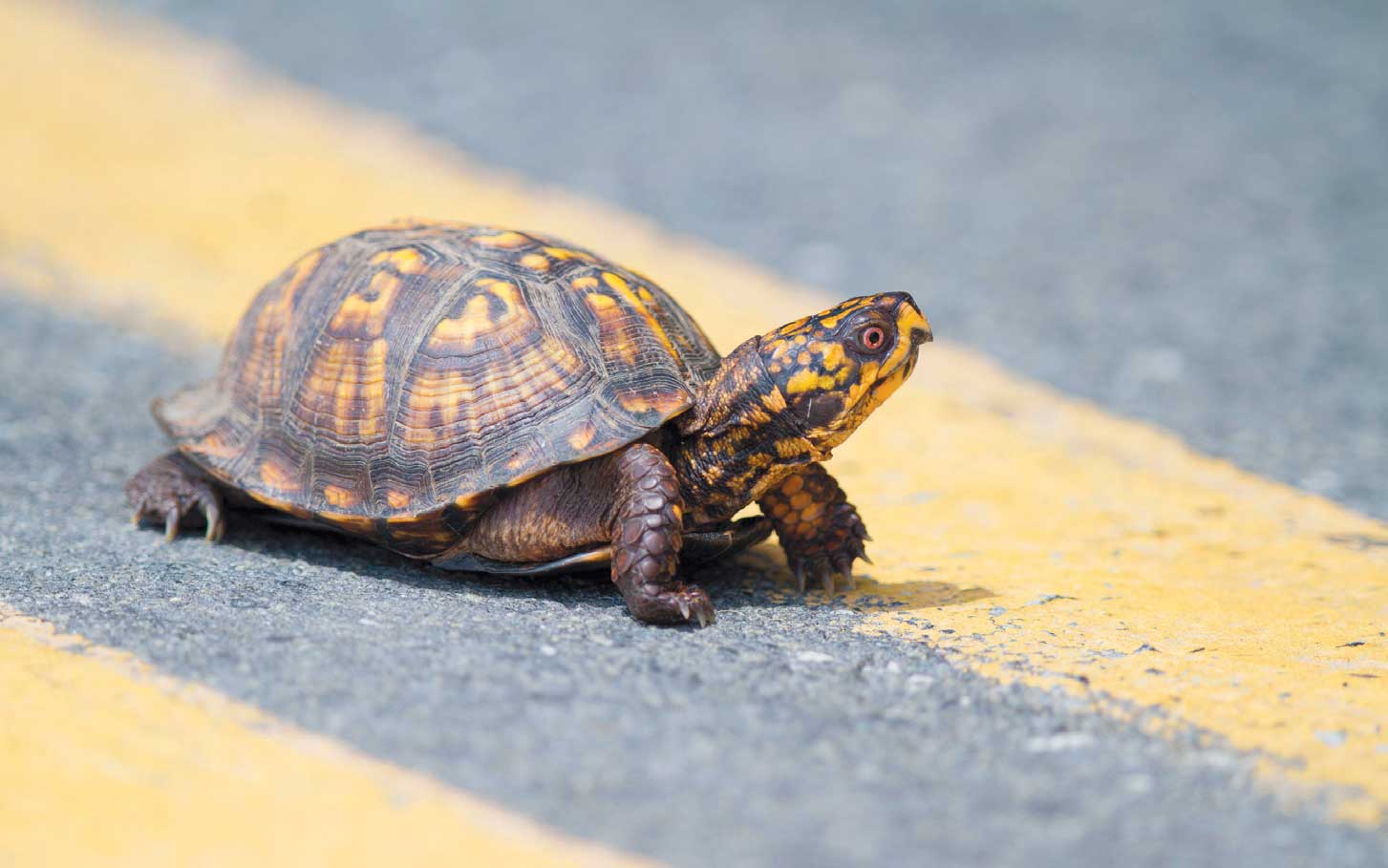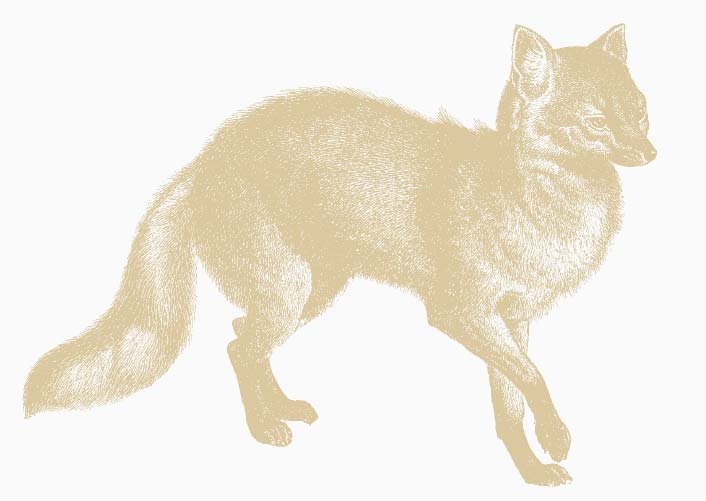Watching out for Wildlife
What Jerseyite has not been across the new Cuomo Bridge by now? Yea, I know it is in New York, but barely. It is our gateway to all things New England. It’s a beautiful structure, spanning one of the widest parts of the Hudson River, and I love driving over it on my way to visit family on Cape Cod. This soon-to-be-iconic, state-of-the-art bridge is supported by eight 419-foot towers. On the southeastern tower, the last one on your right as you cross headed east, there is a small platform protruding and a square hole facing south.
This is a nesting box that provides shelter for a pair of peregrine falcons, raptors, or large birds of prey, with a 42-inch wingspan. In late March, this impressive pair laid four eggs and hatched four chicks, or “eyases.” They nest in February, so they have time to raise their young before it’s time to migrate south in the fall. (Watch the bird cam here: mariomcuomobridge.ny.gov/explore-bridge-falcon-webcam).
To falcons, bridges look like cliffs, their customary nesting sites. Plus bridges have pigeons, a perfect food for raptors. Peregrine falcons had been nesting on the old Tappan Zee Bridge since 1985, after two nest boxes were installed. The first chicks were spotted three years later. Since then, the New York State Thruway Authority has continued to work with the New York City Department of Environmental Protection to help reinvigorate the region’s peregrine falcon population. Experts believe the same pair had been nesting on the old Tappan Zee for years, as these are territorial birds that mate for life. So before the old bridge was demolished, officials made sure to include a new nesting box built right into the new tower, and the birds moved in almost immediately.
Birds are good indicators of what is going on in the environment. Peregrine populations dropped precipitously in the 1970s due to the effects of DDT on bird eggs, which was the subject of Rachel Carson’s classic environmental work, Silent Spring. When the insecticide was banned in the U.S. in 1972, there were only about 324 nesting pairs in the United States. Peregrine falcons, bald eagles, and other ecosystem-critical raptors were placed on the Endangered Species list. At last count in 2006, peregrine numbers had increased to nearly 3,000 pairs.
Raptors are not the only wildlife in the region that are having a tough time. Another statewide project called “Connecting Habitat Across New Jersey,” launched in 2019, is working to make our roadways safer for wildlife.
If you leave the Cuomo Bridge and travel down the Garden State Parkway to Route 78 West, around Exit 52 you’ll find yourself driving through the Watchung Reservation. Look up and you’ll notice an overpass that looks like an abandoned, overgrown road. It’s actually an important viaduct for migrating animals. Route 78 cuts through a sensitive wildlife area, so the planners installed planted bridges to ensure as little disruption as possible to the movement of wildlife. When roads and highways cut through forests, the woods are fragmented into smaller pieces which are much less accommodating to animal life. These viaducts mitigate some of the harm by keeping the forest connected.
ROUTE 78 CUTS THROUGH A SENSITIVE WILDLIFE AREA, SO THE PLANNERS INSTALLED PLANTED BRIDGES TO ENSURE AS LITTLE DISRUPTION AS POSSIBLE TO THE MOVEMENT OF WILDLIFE.
Sixteen miles farther west, in Bedminster, there are five turtle tunnels beneath River Road. Wood turtles, a threatened species, hibernate in the wetlands along the Raritan River, then move to higher ground for breeding. Turtles are slow-moving reptiles so they are easy targets for cars as they try to cross the road. Installed in 2014, the tunnels have significantly reduced the turtle mortality rate in this location. If you think about it, it’s not too different from a pedestrian bridge for humans. And, according to a study by Montclair State University, these tunnels are used by up to 150 individual animals a day, and not just turtles! Snakes, frogs, toads, salamanders, box turtles and small mammals are using the passageway, too. It’s been so successful that more tunnels are in the works.
Now take Route 206 North for 35 miles to Allamuchy Mountain State Park on Waterloo Road in Sussex County. This location may be the busiest in the state with animals crossing to breed in the vernal pools between the Musconetcong River to the south and Allamuchy Mountain State Park to the north. During the busiest migration nights in March and April, volunteers help amphibians cross the road, doing four-hour shifts. They help amphibians like wood frogs, spotted salamanders, and spring peepers traipse across the road, all the while collecting data. But people can’t always be on hand at precisely the moment when rains trigger a mass migration. Tunnels like the ones in Bedminster in this location would really help.
A little later in the season, volunteers conduct road patrols along coastal areas, keeping an eye out for nesting female terrapins. They help them safely cross the road, and also educate the public. They even harvest eggs from injured or killed terrapins and transport them to a hatchery.
The Wetlands Institute in Stone Harbor is one of many organizations working to protect coastal-area species from the dangers of coexisting with high population areas and busy roadways. Miles of barrier tube fencing installed by the Institute and its volunteers alongside the Margate Causeway and nearby roadways block terrapins from crossing busy thoroughfares until volunteers can assist them, greatly reducing the roadkill. The Institute also hosts night events from May through July to rescue overturned or impinged horseshoe crabs stranded on Delaware Bay beaches during the spawning season. Sanctioned volunteer groups work from sunset to sunrise, turning over the crabs to allow them safe return to the water.
Organizations dedicated to protecting and caring for nature often view wildlife as part of their mission. The New Jersey chapter of The Nature Conservancy’s efforts to preserve 1,500 acres between the Appalachian and the Highlands mountain ranges, for example, have served to also protect critical habitat for the region’s bobcats, a species previously on the verge of extinction.
As discussed in previous columns, planting a pollinator garden is a good way to support wildlife in the region, but it is only one tool in the shed. Encouraging your municipality to protect wildlife is important, too. There is a lot going on to help our non-human friends all over the state, most of it happening right before our eyes and we don’t even know it.
HERE’S HOW YOU CAN HELP
Learn more and get involved in the effort to help wildlife survive in New Jersey via these sites. Many organizations host volunteer days to support their various initiatives:
- Conserve Wildlife Foundation (NJ):
conservewildlifenj.org/getinvolved/volunteer/#a4- Connecting Habitat Across New Jersey (CHANJ) –NJ Department of Environmental Protection:
nj.gov/dep/fgw/ensp/chanj.htm- The Nature Conservancy:
nature.org/en-us/about-us/where-we-work/united-states/new-jersey- Wetlands Institute:
wetlandsinstitute.org
Northeastern Transportation and Wildlife Conference (NETWC)
September 18–21, 2022, Sheraton Atlantic City Convention Center, Atlantic City
Connecting Habitat Across New Jersey (CHANJ) is hosting this bi-annual conference for the first time along with the South Jersey Transportation Authority (SJTA), New Jersey Fish and Wildlife (NJFW), and the State of New Jersey Department of Transportation (NJDOT). With a working goal of “Roadmaps Reimaged —Harnessing Today’s Opportunities to Help Wildlife Navigate Our Mobile World”, the forum will bring together ecologists and transportation planners, engineers, administrators, and researchers to share their collective expertise and harness opportunities to put pro-wildlife infrastructure solutions into practice.” As of press time, a field trip visit to the Bedminster and Allamuchy sites is included on the agenda. netwc.org






